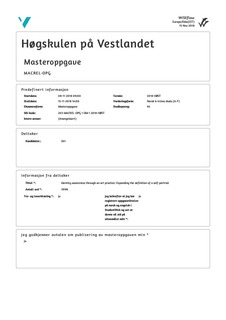| dc.description.abstract | “Wonder is the unwilled willingness to meet what is utterly strange in what is most familiar”
“To wonder is to step back and let things speak to us, a radical passive receptivity to let the things of the world present themselves in their own terms” (van Manen & Adam, 2010, p.452 and p. 442)
Wonder sparked my attention, made me question, ponder and seek to explore the ‘utterly strange’ in the ‘most familiar’. The ‘most familiar’ is the assertion that participation in the arts facilitates identity development and increases self-awareness. The ‘utterly strange’ for me is how does participation in the arts facilitate in identity development and increased self-awareness? In the state of wonder and wideawakeness, functioning as the artist-researcher, I have explored the possibilities of an expanded definition of a self-portrait in order to perhaps experience for myself the elusive and ineffable how. My research was conducted through the qualitative method called Artistic Research. Utilizing this method made it possible for me to act as both the researcher and the subject of the research. Applying phenomenology as the philosophical lens to my research meant that I have been acutely aware of the phenomenon in focus, ‘bracketing’ out any preconceived meanings or prejudices and assuming a state of wonder and wide-awakeness to be open to discovering and understanding.
In the first phase of my inquiry I studied the art and art practices of Catherine Opie, Tracey Emin and Louise Bourgeois. Their work, representing three distinctly different mediums, exemplifies the diversity of contemporary non-representational self-portraiture. It was important to establish an understanding of the various ways artists utilize their creative practice to portray aspects of their identity.
In the second phase, using my art practice as the site of my inquiry, I have conducted a reflective study that focused on trying to understanding how identity development and an increased sense of selfawareness can be manifested during the creative process. My aim was to explore the potential of nonrepresentational self-portraiture in three different mediums; photography, conceptual art and sculpture.
I found that expanding the traditional self-portrait beyond representing the likeness of the creator opens up the possibilities of articulating the self beyond the visage we ordinarily present to the world. An expanded self-portrait informs us of our personal identities, rather then focusing on our social identities, allowing us the possibility to break away from the stereotypes that categorize and ‘box’ us in. Sculpture, conceptual art and photography speak three different languages, because of this they also informed me in three different manners.
My research is relevant to art educators who wish to give their students the possibility to explore beyond the traditional self-portrait. An expanded self-portrait increases the potential to exploit the multitude of mediums and materials available for expressing oneself, thus expanding the communicative qualities that are unique to the arts. Understanding how the different mediums communicate can also help guild teachers in choosing projects that are appropriate to their students. | nb_NO |

